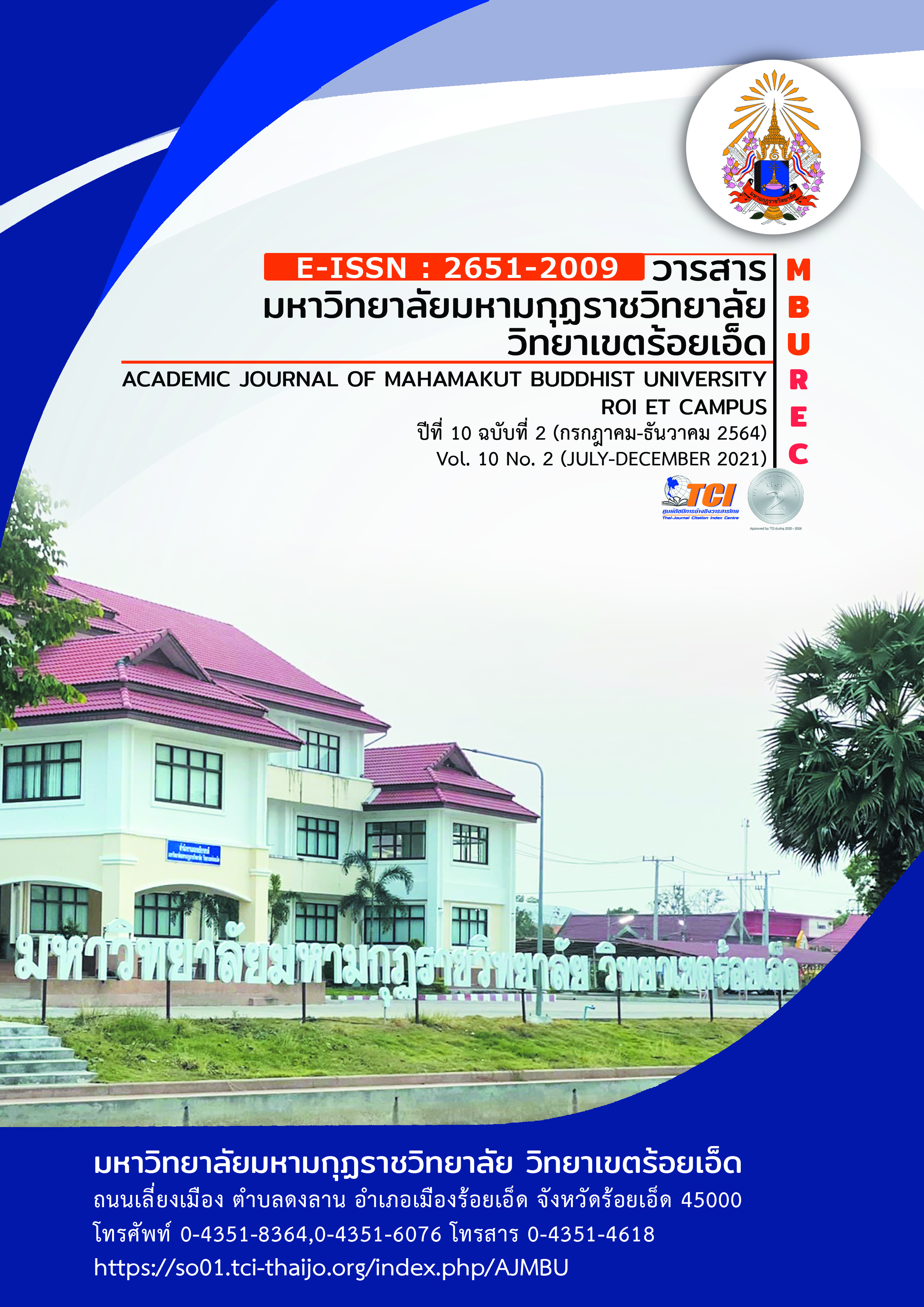Control and Rehabilitation of Inmates According the Penology Guideline by Integrated to the Buddhism
Main Article Content
Abstract
The objectives of the research article were 1) to study the behavior level of inmates from receiving control and rehabilitation according penology guideline by integrated to the Buddhism, 2) to study the opinions of prison staff towards the control and rehabilitation of inmates according penology guideline by integrated to the Buddhism, 3) to the analyze and propose guidelines for the control and rehabilitation of inmates according penology guideline by integrated to the Buddhism. Sample group is new male inmates in November 2019 amount 136 people. Interview group are Lampang Central Prison Officer amount 9 people. The device used to collect the information is a questionnaires and interview. The statistics used in this research are mean and standard deviation. The qualitative research uses descriptive analysis.
The research results found that: 1. The level of behavior of the inmates from being controlled and rehabilitated according to the principles of integrated Buddhist doctrine Overall, at high level. 2. The opinions of prison staff on the control and rehabilitation of prisoners in accordance with integrated Buddhist theology consists of 1) making prisoners accountable; 2) making the inmates honest 3) making the inmates to have patience 4) making the inmates to be reckless 5) making the prisoners more committed to their duties 6) Making prisoners to respect the rights of themselves and others. 3. Guidelines for control and rehabilitation to inmates. In side of responsibility, Inmates should practice to known to control oneself, behave to accordance with morals. In side of honesty, Inmates should practice to known finish working according framework of the work type at a specified time, and show a friendliness, have a generousness. In side of patience, Inmates should practice to know to adjust the personality at good, not sorrowful, keep to practice meditation to calm the mind, not distracted. In side at is the commitment in duty, Inmates should practice to known at be learn about choose to know, and have an understanding of what is learned, including knowing to continually improve work skills in regular duty. In side of respecting the rights of Self and others, Inmates should practice to known uphold rights of Self, and respect the rights of others, give to honor, accept roles and responsibilities of others.
Article Details
References
จตุพร บานชื่อ. (2549). ความหมายและขอบเขตของอาชญากรรม เอกสารการสอนชุดวิชาอาชญาวิทยา. นนทบุรี : มหาวิทยาลัยสุโขทัยธรรมาธิราช.
ไพศาล ไกรสิทธิ์. (2541). เอกสารคำสอนรายวิชาการพัฒนาตน. ชลบุรี : คณะครุศาสตร์ สถาบันราชภัฎหมู่บ้านจอมบึง.
ราตรี พัฒนรังสรรค์. (2544). พฤติกรรมมนุษย์กับการพัฒนาตน. กรุงเทพมหานคร : สถาบันราชภัฏจันทรเกษม.
เรียม ศรีทอง. (2542). พฤติกรรมมนุษย์กับการพัฒนาตน. กรุงเทพมหานคร : เธิร์ดเวฟ เอ็ดดูเคชั่น จำกัด.
วรรณา พรหมบุรมย์. (2540). การพัฒนามนุษย์ที่ยั่งยืน. กรุงเทพมหานคร : สหธรรมิก.
ศักดิไทย สุรกิจบวร์. (2550). การรู้จักและเข้าใจตนเอง: ฐานในการพัฒนาตนเองของผู้บริหารมืออาชีพ. วารสารบริหารการศึกษา. 4(8). 29-48.


